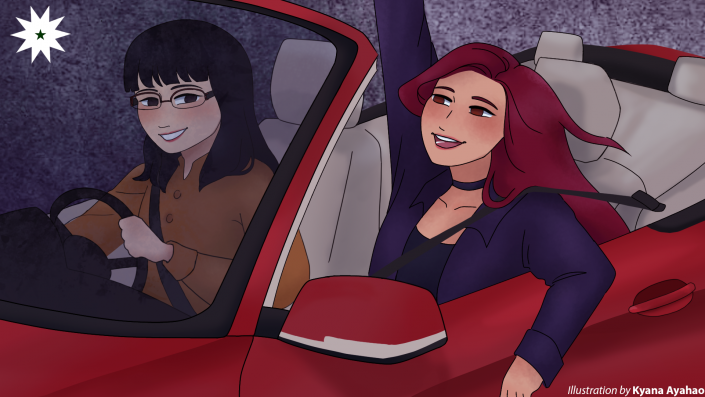At the outset, Ride or Die seems to be the high-octane queer feminist story we’ve all been waiting for. Spunky and defiant, the film tackles modern-day womanhood and sexuality against the backdrop of a patriarchal society with familial expectations. The story follows Nanae (Honami Sato) and Rei (Kiko Mizuhara) who find themselves on the run after they kill Rei’s abusive husband.
One would expect that an adaptation film that takes most of its material from Ching Nakamura’s complicated but well-told story Gunjō would make for an intricate and brilliant plot—unfortunately, Ryuichi Hiroki’s risqué direction falls spectacularly flat. Riddled with plot holes and devil-may-care twists and turns, Ride or Die is an explosive two hours that sputters off to a nonsensical dead end that leaves more questions than it answers.
Two sides of the same coin
Hiroki goes to great lengths to show a contradiction in the film’s storytelling. He takes the audience on a trip, passing through scenic urban and countryside landscapes layered with an overly sweet pop and acoustic soundtrack that mirrors the almost-maniacal euphoria of the two women as they carve their path to freedom.
Creating an alluring portrait of the leads weaved with polished sets, the intent to provide an ironic backdrop to their romance unfortunately brought more ambiguity than calculated cinematography. The film’s unorthodox shooting style and musical score sink low, revealing to be authentic lapses of judgment. And while the contradictory storytelling points to the cruelty of the structures that the two women are confined in, it runs the risk of romanticizing toxic love.
The audience is then forced to question their initial feelings of sympathetic joy for Nanae and Rei when their liberation quickly flips upside down, returning to their self-destructive behaviors. Mizuhara and Sato masterfully explore the paradoxical feelings of love, hate, desire, and fear brought about by their traumatic pasts which hinder them from genuinely loving each other.

Hot mess
With hardly an escape plan, Rei and Nanae run away from the prisonlike lives they have led. At multiple points of their escapade, Rei repeatedly expresses her intent to surrender to the police the very next day—but it never happens. What initially seemed like fear of imprisonment gradually unravels to be wishful spending of more time with her longtime love. But this two-layered metaphor just might be the rare admirable element in the winding plot.
Reuniting after a decade of zero contact, Rei and Nanae are introduced with a seemingly intimate connection that goes way back. But as the two women ignite a slow burn romance, multiple flashbacks of their time in high school reveal a non-existent friendship; creating erratic pacing of their relationship, the plot begins to evoke confusion.
As they wander to each others’ previous house, a stark contrast of their worlds unfolds. The film explores Nanae’s abusive past in her cramped house, utterly different from Rei’s big and lavish home. However profound this idea, it becomes lost in the mess of a plot. Touching sub-themes and character backgrounds came across as superficial and open-ended, leaving every viewer scrambling to make sense of the story.
Mad wo(man)
Despite marketing itself as an empowering tale of queer liberation, it hardly takes a few minutes before the telltale signs of the male gaze becomes apparent. The excessive nudity borders on lesbian fetishization, with the movie ultimately hinging itself on gratuitous female suffering and subjugation without offering a cathartic analysis.
By choosing to romanticize the deadly love affair and yet refusing to address the abuse and manipulation present in the relationship, Hiroki sends a dangerous message about queer love. Taking into consideration the scarcity of authentic and empowering portrayals of queer women onscreen, the film’s choices are even more questionable in the cold light of day.
Furthermore, the movie frames love as the driving force behind the two women’s actions. Rei goes to great lengths for Nanae–offering to pay her school fees, killing her abusive husband—but expects something in return. And yet, her obsessive issues are speciously paraded as love.
There is a thin line between exposing the harsh realities of women and perpetuating them, and the film opts to showcase incessant images of female suffering that teeter between humanizing and exploitative. Society has progressed past constantly illustrating the problem; the next step is to Ride or Die fighting for emancipation.
Rating: 2.5/4.0
